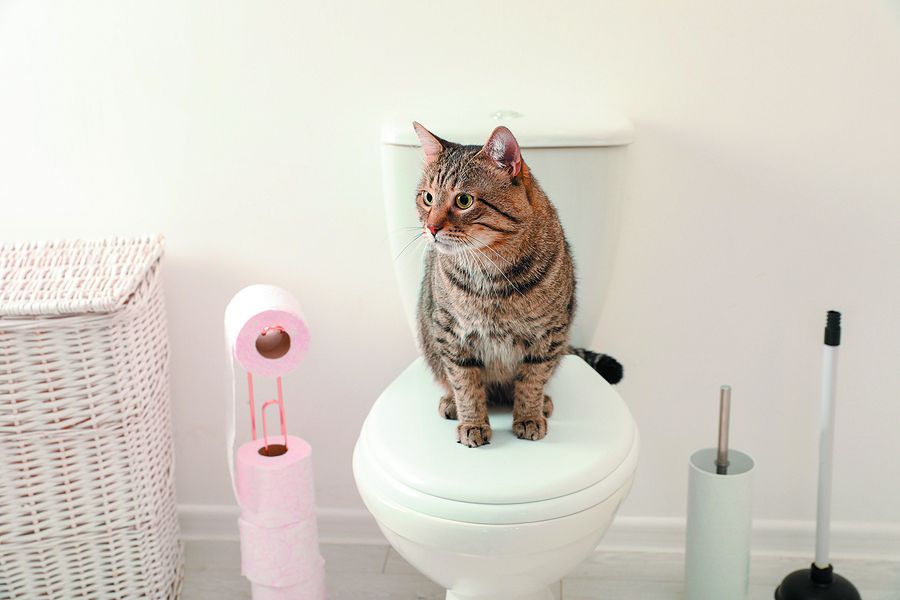In this article below you can get some exceptional help and advice relating to Can You Flush Cat Poo or Litter Down the Toilet?.

Introduction
As pet cat owners, it's essential to bear in mind just how we dispose of our feline friends' waste. While it might seem hassle-free to purge pet cat poop down the bathroom, this method can have detrimental consequences for both the atmosphere and human health.
Environmental Impact
Purging pet cat poop presents damaging virus and bloodsuckers right into the supply of water, presenting a substantial threat to marine ecosystems. These contaminants can negatively impact marine life and compromise water quality.
Health Risks
Along with ecological worries, purging feline waste can also pose wellness threats to people. Cat feces might have Toxoplasma gondii, a parasite that can cause toxoplasmosis-- a possibly serious illness, specifically for expecting females and individuals with damaged immune systems.
Alternatives to Flushing
Fortunately, there are much safer and more accountable means to throw away cat poop. Think about the adhering to options:
1. Scoop and Dispose in Trash
The most typical approach of getting rid of feline poop is to scoop it right into an eco-friendly bag and throw it in the trash. Make sure to make use of a committed clutter inside story and dispose of the waste immediately.
2. Usage Biodegradable Litter
Select eco-friendly pet cat trash made from products such as corn or wheat. These trashes are environmentally friendly and can be safely gotten rid of in the trash.
3. Bury in the Yard
If you have a backyard, think about burying cat waste in a marked area away from veggie gardens and water resources. Make sure to dig deep enough to stop contamination of groundwater.
4. Set Up a Pet Waste Disposal System
Buy a family pet garbage disposal system particularly made for feline waste. These systems make use of enzymes to break down the waste, decreasing smell and environmental effect.
Verdict
Responsible pet dog ownership prolongs past giving food and shelter-- it likewise includes correct waste monitoring. By refraining from flushing feline poop down the bathroom and selecting different disposal approaches, we can decrease our ecological impact and shield human wellness.
Why Can’t I Flush Cat Poop?
It Spreads a Parasite
Cats are frequently infected with a parasite called toxoplasma gondii. The parasite causes an infection called toxoplasmosis. It is usually harmless to cats. The parasite only uses cat poop as a host for its eggs. Otherwise, the cat’s immune system usually keeps the infection at low enough levels to maintain its own health. But it does not stop the develop of eggs. These eggs are tiny and surprisingly tough. They may survive for a year before they begin to grow. But that’s the problem.
Our wastewater system is not designed to deal with toxoplasmosis eggs. Instead, most eggs will flush from your toilet into sewers and wastewater management plants. After the sewage is treated for many other harmful things in it, it is typically released into local rivers, lakes, or oceans. Here, the toxoplasmosis eggs can find new hosts, including starfish, crabs, otters, and many other wildlife. For many, this is a significant risk to their health. Toxoplasmosis can also end up infecting water sources that are important for agriculture, which means our deer, pigs, and sheep can get infected too.
Is There Risk to Humans?
There can be a risk to human life from flushing cat poop down the toilet. If you do so, the parasites from your cat’s poop can end up in shellfish, game animals, or livestock. If this meat is then served raw or undercooked, the people who eat it can get sick.
In fact, according to the CDC, 40 million people in the United States are infected with toxoplasma gondii. They get it from exposure to infected seafood, or from some kind of cat poop contamination, like drinking from a stream that is contaminated or touching anything that has come into contact with cat poop. That includes just cleaning a cat litter box.
Most people who get infected with these parasites will not develop any symptoms. However, for pregnant women or for those with compromised immune systems, the parasite can cause severe health problems.
How to Handle Cat Poop
The best way to handle cat poop is actually to clean the box more often. The eggs that the parasite sheds will not become active until one to five days after the cat poops. That means that if you clean daily, you’re much less likely to come into direct contact with infectious eggs.
That said, always dispose of cat poop in the garbage and not down the toilet. Wash your hands before and after you clean the litter box, and bring the bag of poop right outside to your garbage bins.
https://trenchlesssolutionsusa.com/why-cant-i-flush-cat-poop/

I'm very involved in How to Dispose of Cat Poop and Litter Without Plastic Bags and I am praying you liked the entire piece. Enjoyed reading our blog posting? Please share it. Help another person discover it. Bless you for your time. Don't forget to check up our blog back soon.
Schedule Your Service
Comments on “Never Flush Cat Poop Down Your Toilet - Safeguard Your Plumbing Infrastructure”